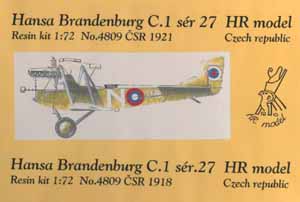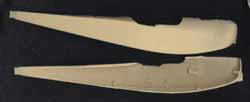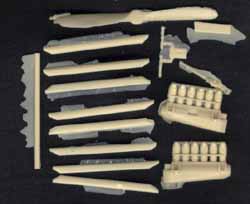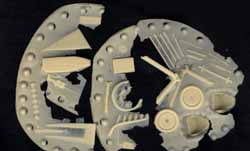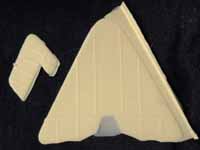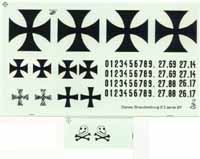HR Model 1/48 Resin Hansa-Brandenburg C.I series 27
By Bob Pearson
IntroductionThe Hansa-Brandenburg C.I was the workhorse of the Austro-Hungarian Luftfahrtruppe, it was built under license by both Phönix and UFAG in 18 different series. Engines used included the Daimler 160hp, Hiero 200hp, Hiero 220hp, Mercedes D.III 160hp, Benz 220hp and the Hiero 230hp depending on series. The design was constantly updated and served from 1915 until after the end of World War One, which explains the variety and scope of improvements carried out on the type.The kit reviewed here is of the Phönix built example 27.88 in postwar Czech service.The KitHR Model has recently released a 1/48 model of the HB C.I. The casting of this kit is an improvement on their 1/72 releases in that the detail is crisper, especially in the engraved lines. However there is a subtle 'orange peel' effect to the parts that remains to be seen how it reacts to paint coverage. The fuselage has basic interior detail, but the large 'bathtub' cockpit provides scope for much improvement. Wings have nice rib detail, but the trailing edges are 1mm thick, so some thinning of their section may also be desired.Interior details are real basic and include: seats, two styles of control columns and foot pedals. The four-piece Daimler 160hp engine is cleanly cast and will be fine used as is – although additional detail will really add to it – especially as it is exposed to the elements. There are two different styles of exhausts, both horn and individual pipes. Armament is in the form of a Schwartzlose machine gun, both a free gun and in its 'baby coffin' above the upper wing, a Maxim and two different Lewis gun .A small photoetched fret consisting of the instrument panel, prop boss, radiator front foot rests and machine gun mount is provided.Instructions are the usual three view and exploded view drawings. Decals are provided for the final series 27 aircraft .. 27.88 in postwar Czech service. HR Model has also released other options for this kit, and the decals from two of those were also sent. They are for Austrian examples (kit 4808); and another Czech example - circa 1921 (kit 4810). Both of these sets include generic serials as well as specific ones so that almost any Series 26, 27 and 369 aircraft may be built. Others can also be done by judicious application of the various numbers included.ConclusionThere has been criticism of HR kits as being crude, however, although they aren't up to RVHP standards, I do like their kits as they provide an excellent starting point for that model that is unavailable anywhere else. They have also been improving their casting and I would say this kit is akin to the old Aurora Albatros C.III, which was an industry standard 30 plus years ago.My thanks to Lubos Vinar of HOBBYSHOP.CZ for the review sample |
|||||

